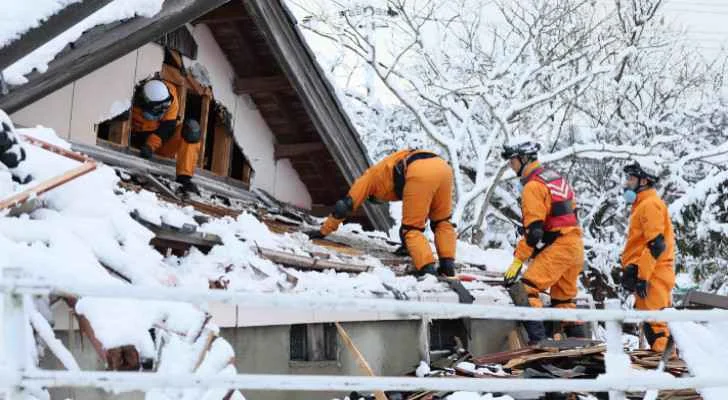An international group of scientists has concluded that some earthquakes may be caused in part by heavy precipitation (rain and especially snow). Earthquakes are primarily caused by the movement of tectonic plates of the earth’s crust. For this reason, scientists are looking for the causes of earthquakes underground.
A team from the Massachusetts Institute of Technology (USA), Tohoku, Tokyo (Japan) and Vienna (Austria) universities concluded that some earthquakes may be caused in part by unexpected causes. The results of the study are presented in the journal. Science Developments.
The researchers focused on a series of earthquakes that occurred on the Japanese Noto Peninsula. Since the end of 2020, this region has been rocked by a series of hundreds of small tremors. Unlike the typical earthquake sequence, which begins with a main shock followed by a series of repeated aftershocks (with smaller shocks compared to the main shock), Noto earthquakes are something else; It is a series of multiple aftershocks without a main shock. Moreover, such earthquakes have no obvious seismic trigger to trigger them.
Scientists analyzed the Japan Meteorological Agency’s earthquake catalog, which provides data on seismic activity across the country. The researchers focused on earthquakes on the Noto Peninsula over the past 11 years, where the “atypical” earthquakes mentioned above have been observed occasionally.
Researchers mapped the change in the peninsula’s seismic oscillation rate and saw a surprising pattern; In 2020, when a series of multiple earthquakes began without a main shock, they synchronized surprisingly well with specific changes in underground pressure. And this pressure was affected by seasonal weather fluctuations – precipitation: rain and snow.
So scientists studied how seasonal precipitation affects formation fluid pressure, or pore pressure, the force exerted on rocks by fluids in the Earth’s cracks and faults (liquid or gaseous components of magma, or gas-rich solutions circulating deep within the Earth).
Rain or heavy snow increases pore pressure, which allows seismic waves to travel more slowly. When this water sinks underground or evaporates, pore pressure decreases and seismic waves travel faster. To better understand the dynamics of these processes, researchers developed a hydromechanical three-dimensional model of the Noto Peninsula. In this way, they were able to track changes in extreme pore water pressure in this area before and during the earthquake.
When scientists incorporated snowfall (specifically heavy snowfall) data into the model, the match between what they saw and what actually happened during the same period was the most complete, according to the Japan Meteorological Agency. This means that many of the earthquakes experienced by the people of Noto can be partially explained by seasonal precipitation, especially heavy snowfalls. It also turned out that the real trigger that started the tremors was definitely underground.
Source: Port Altele
